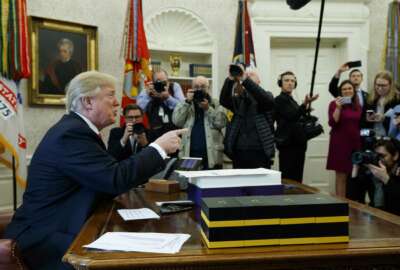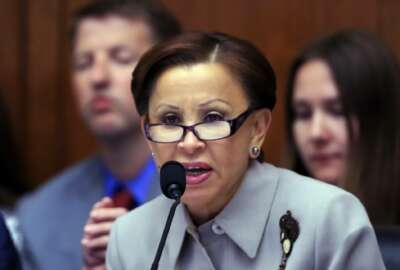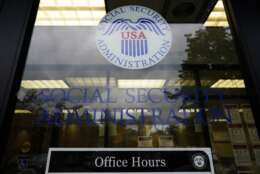
SBA ‘beats the odds’ by finalizing several major contracting regulations
Contractors can now determine if they qualify as a small business based on a five-year revenue calculation instead of a three-year average under a new, much-ant...
In November 2018, Federal News Network and procurement expert Larry Allen set some odds about whether certain acquisition regulations would be completed sometime in 2019.
For the most part, the odds makers were not optimistic, given the fact that during 2017 and 2018, the number of FAR rules that were either proposed or finalized were scarce.
So here we are a year later, and it’s nice to be able to report that the Small Business Administration, at least, may just have beaten the odds on several important procurement provisions.
Over the last few weeks, SBA finalized rules to improve the HUBZone program, to change the way the government calculates small business sizes based on earnings and a half dozen other rules that have been in the works since the 2015.
Each of these rules are trying to address some sort of systemic problem in the federal contracting market. Why it took, in some cases, three years to get through the system is unclear. The lack of a permanent administrator in the Office of Federal Procurement Policy or the dislike of regulations by the Trump administration or just the slow nature of getting a rule through the Federal Acquisition Regulations Council are all possibilities.
“We have been waiting for them to come out,” said Tony Franco, a senior partner with the law firm PilieroMazza. “They provide clarity on a number of issues, particularly how small businesses may comply with the subcontract limitation requirements and how independent contractors may be treated. There is a great deal of confusion in the community on those issues so this is helpful.”
The new calculation of small business earnings is among the most important new rules.
This final rule, which takes effect Jan. 6, changes the calculation of average annual receipts for all of SBA’s receipts-based size standards to a five-year average from the current three-year average.
“SBA adopts a two-year transition period through Jan. 6, 2022. During the transition period, a firm may choose between calculating receipts using a three-year average or a five-year average,” the agency states in the rule. “With an expanded pool of small businesses, the federal government will have more qualified small businesses to choose from, and as a result, likely will set aside more contracts for small businesses. SBA also agrees with commenters that the five-year averaging period will allow more small firms to benefit from SBA’s small business assistance programs by extending their small business status for a longer period. The change would also enable small businesses that have just exceeded their size standards to regain their small business status and to benefit from federal small business assistance. SBA believes that the change to a five-year averaging period will expand benefits to all small businesses over the long-run, although the proposed change would have led to some negative impacts in the short-run.”
Matt Schoonover, the managing partner of Koprince Law, said there are two big takeaways from this final rule. The first is the move to five-year calculations rather than three-year.
Second, he said, through this rule the SBA is clarifying its plans to implement the Runway Extension Act which became law in 2018.
Related Stories

How many procurement regulations were finalized in 2017? The answer may surprise you
Major update to HUBZone program
Next on the list is the HUBZone final rule, which becomes effective on Dec. 26.
This comprehensive revision is trying to fix many of the problems that plagued the 1997 law.
“The rule is intended to make it easier for small business concerns to understand and comply with the program’s requirements and to make the HUBZone program a more attractive avenue for procuring agencies,” SBA states in the final regulation. “SBA recognizes the challenge many firms face in attempting to meet the requirement that at least 35% of the firm’s employees live in a HUBZone. Firms with a significant number of employees may have a hard time meeting this requirement because it is often difficult to find a large number of individuals living in a HUBZone who possess the necessary qualifications. Smaller firms also have a hard time meeting this requirement because the loss of one employee could adversely affect their HUBZone eligibility.”
Agencies have never made the governmentwide goal of awarding at least 3% of all contracts to HUBZone companies. In fiscal 2018, SBA said agencies awarded just 2.05% up from 1.65% the year before.
“The SBA is doing what they can or what they think is appropriate to help make compliance with the program easier while still making sure the goals of the program are met. Sometimes, those two inclinations can conflict, but I think SBA is doing a good job of trying to say what can we say to give some assurance to the program so people can trust it when they issue awards,” Schoonover said. “There definitely are some changes that are needed for the HUBZone program. A lot of times HUBZone small businesses are spending so much time and effort to maintain compliance that at the end of the day, some questioned whether the hassle was worth the benefit.”
Schoonover added the final rule should help both HUBZone companies and contracting officers and, in the end, increase the number of companies receiving awards.
SBA said the final rule requires only annual recertification that the company qualifies rather than proof after every award.
“This reduced burden on certified HUBZone small businesses will allow a firm to remain eligible for future HUBZone contracts for an entire year, without requiring it to demonstrate that it continues to meet all HUBZone eligibility requirements at the time it submits an offer for each additional HUBZone opportunity,” SBA states. “The concern would be required to come into compliance with the 35% HUBZone residency requirement again at the time of its annual recertification in order to continue to be eligible for additional HUBZone contracts after the one-year certification period.”
Latest Contracting News
“The SBA is trying to put some level of objectivity now by helping to define what it means to attempt to maintain residency compliance,” he said. “If a company falls below 20% of employees who live in HUBZone, SBA has determined that the company is not attempting to maintain eligibility. The former requirements were more subjective.”
Bundling and subcontracting changes
The third and final set of regulations have been a long-time incoming, some dating back four years.
Among the areas this regulation addressed are more public contract bundling notifications, procurement center representatives will get expanded oversight, and agencies can earn double credit for disaster contracts.
Among the most significant is the new requirement for agencies to publish within seven days the details of a substantial bundling of contract requirements.
Another update authorizes agencies to receive double credit for small business goaling achievements on SBA’s scorecard when they award contracts to local area small businesses in connection with a disaster.
A third change lets procurement center representatives review any acquisition regardless of whether it is set aside, partially set aside, or reserved for small business.
PilieroMazza’s Franco said the rule also “tightens up and clarifies subcontracting plan requirements for large firms that need to meet small business and socio-economic goals. Because the SBA had issued proposed rules a year ago — on Dec. 4, 2018, the government contracting community is not particularly surprised by the final rules which go in effect at the end of this year.”
Franco added while these final rule are important, SBA continues to make other major changes to small business contracting programs.
Copyright © 2024 Federal News Network. All rights reserved. This website is not intended for users located within the European Economic Area.
Jason Miller is executive editor of Federal News Network and directs news coverage on the people, policy and programs of the federal government.
Follow @jmillerWFED








